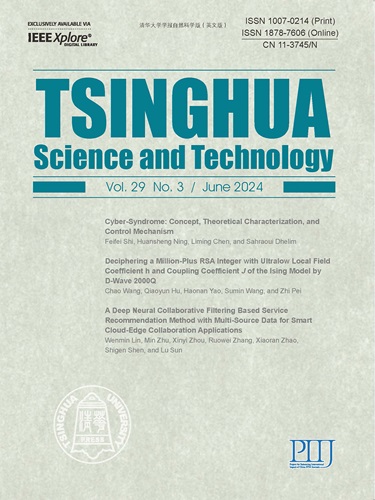Maximizing Depth of Graph-Structured Convolutional Neural Networks with Efficient Pathway Usage for Remote Sensing
IF 3.5
1区 计算机科学
Q1 Multidisciplinary
引用次数: 0
Abstract
Recently, Randomly Wired Neural Networks (RWNNs) using random graphs for Convolutional Neural Network (CNN) construction have shown efficient layer connectivity, but may limit depth, affecting approximation, generalization, and robustness. In this work, we increase the depth of graph-structured CNNs while maintaining efficient pathway usage, which is achieved by building a feature-extraction backbone with a depth-first search, employing edges that have not been traversed for parameter-efficient skip connections. The proposed Efficiently Pathed Deep Network (EPDN) reaches maximum graph-based architecture depth without redundant node use, ensuring feature propagation with reduced connectivity. The deep structure of EPDN, coupled with its efficient pathway usage, allows for a nuanced feature extraction. EPDN is highly beneficial for processing remote sensing images, as its performance relies on the ability to resolve intricate spatial details. EPDN facilitates this by preserving low-level details through its deep and efficient skip connections, allowing for enhanced feature extraction. Additionally, the remote-sensing-adapted EPDN variant is akin to a special case of a multistep method for solving an Ordinary Differential Equation (ODE), leveraging historical data for improved prediction. EPDN outperforms existing CNNs in generalization and robustness on image classification benchmarks and remote sensing tasks. The source code is publicly available at https://github.com/AnonymousGithubLink/EPDN.基于有效路径的图结构卷积神经网络深度最大化遥感研究
最近,使用随机图构建卷积神经网络(CNN)的随机连线神经网络(RWNNs)显示出有效的层连通性,但可能会限制深度,影响近似、泛化和鲁棒性。在这项工作中,我们增加了图结构cnn的深度,同时保持了有效的路径使用,这是通过使用深度优先搜索构建特征提取主干来实现的,该主干使用未遍历的边缘来进行参数高效的跳过连接。提出的高效路径深度网络(EPDN)在不使用冗余节点的情况下达到最大的基于图的架构深度,在减少连接的情况下确保特征传播。EPDN的深层结构,加上其有效的通路使用,允许细微的特征提取。EPDN对遥感图像处理非常有利,因为它的性能依赖于对复杂空间细节的解析能力。EPDN通过其深度和高效的跳过连接来保留低级细节,从而增强了特征提取。此外,适应遥感的EPDN变体类似于求解常微分方程(ODE)的多步骤方法的特殊情况,利用历史数据来改进预测。EPDN在图像分类基准和遥感任务上的泛化和鲁棒性优于现有cnn。源代码可在https://github.com/AnonymousGithubLink/EPDN上公开获得。
本文章由计算机程序翻译,如有差异,请以英文原文为准。
求助全文
约1分钟内获得全文
求助全文
来源期刊

Tsinghua Science and Technology
COMPUTER SCIENCE, INFORMATION SYSTEMSCOMPU-COMPUTER SCIENCE, SOFTWARE ENGINEERING
CiteScore
10.20
自引率
10.60%
发文量
2340
期刊介绍:
Tsinghua Science and Technology (Tsinghua Sci Technol) started publication in 1996. It is an international academic journal sponsored by Tsinghua University and is published bimonthly. This journal aims at presenting the up-to-date scientific achievements in computer science, electronic engineering, and other IT fields. Contributions all over the world are welcome.
 求助内容:
求助内容: 应助结果提醒方式:
应助结果提醒方式:


